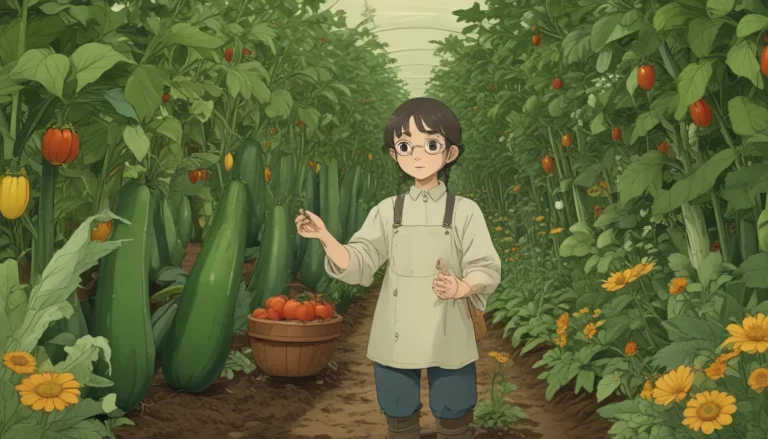Preventing Collar and Crown Rot in Fruit Trees

If you’re a fruit tree enthusiast, you know how devastating diseases like collar and crown rot can be to your trees. These diseases are caused by a group of organisms known as Phytophthora, which are aggressive plant destroyers that can infect a wide range of fruit trees, both temperate and tropical.
In this article, we’ll explore how to identify, prevent, and treat collar and crown rot in fruit trees caused by Phytophthora. We’ll cover the symptoms of these diseases, how to distinguish them from other tree pathogens, and practical steps you can take to protect your trees. So, grab a cup of tea, settle in, and let’s dive into the world of fruit tree diseases!
Understanding Phytophthora
Phytophthora, derived from Greek, literally means plant destroyers. Once thought to be fungi, these water molds are now considered a separate type of organism that are as aggressive and destructive as fungi. More than 100 species of Phytophthora can cause diseases on hundreds of plant species, including a variety of fruit trees.
One of the challenges with Phytophthora infections is that they are difficult to diagnose. These organisms can manifest as root rot, crown rot, or collar rot in fruit trees, impacting the tree’s ability to thrive and produce healthy fruit.
Collar Rot Symptoms
The symptoms of collar rot in fruit trees can be subtle at first, making it challenging to detect the infection until it has already progressed significantly. Some common symptoms of collar rot include:
- Depressed canker on the lower part of the scion, which may be purple, grey, or dark brown
- Gummy exudate under the dead bark
- Early ripening of fruit, often small and highly colored
It’s essential to distinguish collar rot caused by Phytophthora from other diseases like Armillaria root rot, which can present similar symptoms. Armillaria infections start at the roots and move upwards, while Phytophthora collar rot starts at the crown and spreads downward.
If you suspect your trees may be infected with collar rot, it’s advisable to seek professional diagnosis to determine the exact cause and take appropriate action to protect your trees.
Crown Rot Symptoms
Diagnosing crown rot in fruit trees can be challenging due to the similarity of symptoms caused by various factors. Some common symptoms of crown rot include:
- Obvious decline in tree health
- Bark discoloration (orange or brown) at the crown
- Potential impact of factors like fire blight and winter injury
To accurately diagnose crown rot, it may require careful examination of the crown area, including peeling back the bark to inspect for signs of infection. Seeking expert advice can help in confirming the presence of Phytophthora infection and devising an effective treatment plan.
Preventing Collar and Crown Rot
Prevention is key when it comes to managing collar and crown rot in fruit trees caused by Phytophthora. By implementing proactive measures, you can minimize the risk of infection and protect your trees from these destructive diseases. Here are some practical tips to prevent collar and crown rot:
Grow Resistant Cultivars and Rootstocks
Choosing resistant rootstocks and cultivars can help prevent collar and crown rot in fruit trees. While no single rootstock is resistant to all Phytophthora species, consulting with local experts can help identify suitable options for your specific soil conditions.
Minimize Wet Soil
Avoid planting in soils that drain poorly or are consistently damp. Opt for well-draining soils, and consider planting on a slope to enhance drainage around the tree’s roots. Ensure proper water management to prevent water accumulation around the tree trunk.
Improve Soil Structure
Enhance soil structure by increasing organic matter content and reducing compaction. Incorporating compost, grass clippings, or other organic materials can improve soil health and reduce the likelihood of Phytophthora infection.
Use Biopesticides
Leverage beneficial microbes as biopesticides to combat Phytophthora infections in the soil. Microbes like Trichoderma can help suppress disease-causing organisms and promote healthier soil conditions. Consider inoculating the soil with beneficial microbes to enhance natural disease control.
Support Your Trees
Provide structural support to young trees to prevent rocking or swaying, which can create vulnerabilities leading to infection. Stake or trellis young trees to ensure stability and reduce the risk of damage that can invite pathogens.
Minimize Winter Injury
Protect trees from winter injury by avoiding new growth in late fall and ensuring trees are adequately prepared for colder months. Minimizing stress on trees during winter can help prevent susceptibility to Phytophthora infections.
Plant Your Tree Shallow
Avoid planting fruit trees too deeply, as it can increase the risk of collar rot and hinder root establishment. Plant trees at the appropriate depth to promote healthy growth and reduce the likelihood of disease development.
By following these preventive measures, you can significantly reduce the risk of collar and crown rot in your fruit trees and promote long-term tree health and productivity.
Treating Phytophthora Infections
If your fruit trees are already showing signs of Phytophthora infection, prompt action is necessary to prevent further damage and protect your trees. Depending on the severity of the infection, various treatment options may be considered:
- Remove Infected Tissue: Cut away diseased tissue and allow the area to dry to prevent further spread of the infection.
- Graft Resistant Cultivars: Grafting resistant cultivars onto infected trees can help introduce disease resistance and promote tree recovery.
- Fungicide Treatment: In cases of severe infection, fungicides like metalaxyl or mefenoxam can be used to target Phytophthora organisms. Proper application and coverage of the root zone and affected areas are essential for effective treatment.
It’s crucial to act swiftly and decisively when dealing with Phytophthora infections to minimize tree damage and preserve the health of your fruit trees.
Conclusion
Collar and crown rot caused by Phytophthora can pose significant challenges to fruit tree health and productivity. By understanding the symptoms, preventive measures, and treatment options for these diseases, you can effectively manage and protect your trees from Phytophthora infections.
Remember, proactive tree care, proper soil management, and regular monitoring are essential for maintaining healthy fruit trees and preventing the spread of diseases. Stay informed, stay vigilant, and enjoy the fruits of your labor without the threat of collar and crown rot!
For more tips and resources on fruit tree diseases and management, check out our related guides on preventing tree burr knots, identifying gummosis, and managing root rot in fruit trees. Happy gardening and may your fruit trees flourish with health and vitality!
Stay Rooted in Health and Wellness!
© Gardeners’ Haven 2021. All rights reserved.





